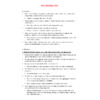|
|
Search Resources (7 Results)
 |
|
Lecture Notes | Approved: 6 years ago | 37.61 kB | Comments: 0
...tissues organized into organs and organ systems....
...Demospongiae). 7. No organs or true tissues;...
...synapses; some sensory organs; diffuse conduction. 9....
...tube; spaces between organs filled with parenchyma....
...forms Simple sense organs, eyespots in some....
...ducts, and accessory organs; internal fertilization; life...
...side. They lack organs for gas exchange...
...cavity around some organs; hemocoel, part of...
...and cephalopods. Sensory organs present (touch, smell,...
...and many internal organs segmented by septa;...
...cord and sense organs (touch, eyes); pair...
...fluid and internal organs. Jointed appendages that...
...feeding or copulatory organs. Exoskeleton secreted by...
...many ganglia; sense organs well developed. Insects...
...and most sensory organs are found in...
...and hemolymph, excretory organs called Malpighian tubules,...
...adaptations: exoskeleton, sense organs, segmentation, ability to...
| N/A |
130
|
johaneswijaya
|
 |
|
Lecture Notes | Approved: 6 years ago | 48.2 kB | Comments: 0
...to more complex organs and organs systems...
...complex organs and organs systems and to...
...other flatworms lack organs specialized for gas...
...the parasites. Reproductive organs nearly fill the...
...sacs of sex organs, lie posterior to...
...and anus. Internal organs lie in the...
...of the internal organs, and a mantle....
...and well-developed sense organs. This supports learning...
...of the internal organs, such as the...
...variety of human organs, including skeletal muscle....
...have well-developed sense organs, including eyes for...
...smell. Most sense organs are located at...
...surrounding tissues and organs. Hemolymph returns to...
...variety of specialized organs for gas exchange....
...are regionally specialized organs with discrete functions....
...and other sense organs concentrated on the...
...that bathe the organs. Nitrogenous wastes are...
...sea star’s digestive organs then begin to...
| N/A |
123
|
johaneswijaya
|
 |
|
Lecture Notes | Approved: 6 years ago | 75.15 kB | Comments: 0
...male and female organs on the same...
...organized into tissues, organs, etc. Heterotrophs that...
...well developed sense organs and nervous system....
...Demospongiae). 7. No organs or true tissues;...
...synapses; some sensory organs; diffuse conduction. 9....
...tube; spaces between organs filled with parenchyma....
...10. Simple sense organs, eyespots in some....
...ducts, and accessory organs; internal fertilization; life...
...space for many organs to function with...
...wastes, etc. to organs and tissues. Adaptations...
...cavity around some organs; hemocoel, part of...
...cephalopods. 10. Sensory organs present (touch, smell,...
...and many internal organs segmented by septa;...
...cord and sense organs (touch, eyes); pair...
...fluid and internal organs. Jointed appendages that...
...feeding or copulatory organs. Exoskeleton secreted by...
...many ganglia; sense organs well developed. Insects...
...adaptations: exoskeleton, sense organs, segmentation, ability to...
...without stomach. Sense organs of taste, smell...
...into tissues and organs. Roots, stems, flowers...
...and fruits are organs. There are three...
...in soft non-woody organs; cells elongated; remain...
...rigid support to organs; cells usually die...
...FORM Leaves are organs and vary greatly...
...Reproductive and accessory organs are normally arranged...
...The whorls of organs sit on an...
...the male reproductive organs. They consist of...
| 1
|
219
|
Guest
|
 |
|
Solutions | Approved: 6 years ago | 338.12 kB | Comments: 0
...B. cells C. organs D. tissue systems...
...- tissues - organs B. cells -...
...- molecules - organs - tissues -...
...C. molecules - organs - cells -...
...- tissues - organs E. organs -...
...- organs E. organs - organelles -...
...B. cells C. organs D. tissue systems...
...- tissues - organs B. cells -...
...- molecules - organs - tissues -...
...C. molecules - organs - cells -...
...- tissues - organs E. organs -...
...- organs E. organs - organelles -...
...be organized into organs. Understanding the needs...
| N/A |
143
|
1realjakesmith
|
 |
|
Outline | Approved: 7 years ago | 357.84 kB | Comments: 0
...Describe the main organs of the digestive...
...and the accessory organs), and explain how...
...Describe the main organs of the respiratory...
...Describe the main organs, vessels, and tissues...
...Describe the main organs of the endocrine...
...Describe the main organs of the urinary...
...Describe the main organs of the reproductive...
...Describe the main organs, components, and divisions...
...to tissues to organs to organ systems...
...Organ system—teams of organs that together perform...
...a specific function. Organs are in turn...
...helping to hold organs in place e....
...physical harm. a. Organs such as skin,...
...canal and accessory organs. • CORE IDEA:...
...canal (divided into organs along its length)...
...and various accessory organs, including salivary glands...
...salivary glands and organs that release digestive...
...into specialized digestive organs. 2. Mouth a....
...anus. B. Accessory organs 1. Accessory organs...
...organs 1. Accessory organs secrete specific digestive...
...to other body organs. C. Path of...
...system consists of organs, glands, and other...
...enzymes. 3. Other organs secrete hormones but...
...a. Kidneys—pair; central organs of urinary system...
...rapidly and develops organs, such as lungs...
...canal and accessory organs. Accessory organ Anus...
...canal and accessory organs. ? Discussion may...
...as metabolically active organs. Bone is constantly...
...canal and accessory organs. ? A table...
...made of the organs of the alimentary...
...and their function.? Organs of the Digestion...
...the series of organs a sperm cell...
...the series of organs a secondary oocyte/egg/fetus...
| N/A |
185
|
Guest
|
 |
|
Outline | Approved: 7 years ago | 158.5 kB | Comments: 0
...a hierarchy of organs, tissues, and cells....
...multicellular animals, have organs that are composed...
...have three basic organs: roots, stems, and...
...the main photosynthetic organs of most plants....
...site of photosynthetic organs of most plants,...
...attract pollinators. Plant organs are composed of...
...and replacement of organs after injury to...
...cells for new organs. A major difference...
...and certain plant organs, such as flowers,...
...the tissues and organs of the growing...
...cells, tissues, and organs. Each cell in...
...with all their organs compressed longitudinally. The...
...multicellular tissues and organs. The development of...
...apical meristem as organs develop. Researchers use...
...specific tissues and organs, however, because random...
...change in the organs produced. One example...
...above, the floral organs develop in four...
...pattern of floral organs. The ABC model...
...types of floral organs. The ABC model...
| N/A |
175
|
kelseymarkey
|
 |
|
Outline | Approved: 7 years ago | 272 kB | Comments: 0
...have no specialized organs for gas exchange...
...to the inner organs or outer surfaces...
...the parasites. Reproductive organs nearly fill the...
...sacs of sex organs, lie posterior to...
...anus. Their internal organs lie in the...
...of the internal organs. The mantle, which...
...some of the organs that were bilateral...
...have well-developed sense organs and a complex...
...variety of human organs, including skeletal muscle....
...have well-developed sense organs, including eyes for...
...smell. Most sense organs are located at...
...surrounding tissues and organs. Hemolymph returns to...
...variety of specialized organs for gas exchange....
...sea star’s digestive organs then begin to...
| N/A |
180
|
kelseymarkey
|
|
Post your homework questions and get free online help from our incredible volunteers
|